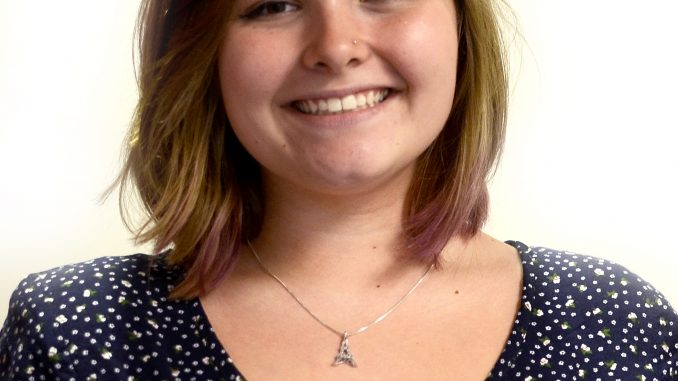
 Transfixed. Locked in the gaze of bones reaching for what seemed like miles. Separating myself from a skeleton of a nine foot man was a thick glass showcase as provided by the The College of Physicians’ Mütter Museum.
Transfixed. Locked in the gaze of bones reaching for what seemed like miles. Separating myself from a skeleton of a nine foot man was a thick glass showcase as provided by the The College of Physicians’ Mütter Museum.
Stages of fetal development, diseased and dismembered body parts and even slivers of Albert Einstein’s brain are proudly displayed in this small museum.
What better place could there be to host a modern dance performance challenging life with physical disabilities than a house of medical oddities itself? Temple graduate student and teaching assistant, Jae Hoon Lim decided to make history by hosting the first dance performance in the Mütter’s halls on Feb. 20-21 with his master of fine arts thesis concert, “Life Between.”
With entrance to the museum included in admission cost, patrons casually browsed the shelves of skulls and skin until doors opened at 7:15 p.m.
Curtains fell from ceiling to floor, leading the eye to the ornate ceilings and chandeliers of this great hall. Kissing the walls were portraits of physicians of the past – 32 of them to be exact. Their eyes cast over the dimly lit floor where geometric shadows fell and three rows of seating encircled the stage.
The essence of the great hall created a calming ambiance as I waited patiently, not sure what to expect. “Life Between” was set to be a representation of overcoming diagnoses of osteoporosis, scoliosis, and F.O.P., or fibrodysplasia ossificans progressiva, through dance.
“Our skeleton is an essential frame that upholds the body and allows us to both navigate our environment and connect with others,” Lim said. “When the integrity of this frame is compromised, as in conditions like scoliosis, one may feel alienated, misunderstood, and abandoned. Looking and moving differently can generate fear, lack of confidence and physical and psychological anguish. Those who adapt to deformities, living full, productive lives, reveal the strength of the human spirit.”
With interest piqued and eyebrows raised, the hall fell into complete, sense-altering darkness. Enter the dancers. One by one they entered, barely dressed. Two women and two men exposed the majority of their bodies as they entered, clad in camouflage material.
In lighting and music, the mood became very intense, very quickly. Slowly, and seemingly self-consciously the dancers reached for the mauve shawls at their feet, dawning them in fluid seamless motion. Their actions depicted a sense of hiding.
“When they came out in those [camouflage] costumes, it looked like skin.” Marie Anne Chiment, head of design in the theater department of Boyer College of Music and Dance, said. “I thought, ‘Oh my God, he’s talking about skin.’ Then when they took off their shawls, I thought they were stripping out of their skin and going down to a more basic level.”
I don’t think I could have said it better myself. The soft light illuminated the dancers’ skin as they physically removed their shawls and figuratively removed the “shame” of their disease. Throughout the rest of the performance there was a strong sense of support between the dancers, as if their encouragements were the only thing keeping each other going.
This evident aspect of the performance was illustrated not only through physical contact, but in the sporadic poetry readings that were whispered in place of music. A personal favorite, and awe-inspiring excerpt came from president Theodore Roosevelt: “Courage is not having the strength to go on; it is going on when you don’t have the strength.”
The group movement and synchronization was breathtaking. The simplicity and fluidity of movement was an incorporation of both modern dance and ballet. A perfect execution of the performance illustrated the beauty of each moment when addressing a different aspect of physical deformity.
The 40-minute performance was over in what seemed like a blink of an eye as I sat in a sense of captivated admiration.
“I get to see a lot of student productions, particularly with my wife,” said Louis Berman, Chiment’s husband. “This was a very high-quality student production, and they don’t always come together this way, so that was pleasing.”
As I’m sure hard work was the main cause of the high-quality production, Lim’s impressive fundraising efforts must have had an affect as well. On the fundraising website Indiegogo, Lim raised $3,210, surpassing his initial $3,000 goal. Perks for donations ranged from a $20 “good for one huge thank-you-hug and a five-minte shoulder rub from me!” to $150 private pilates lessons from Lim.
Chiment is also one of Lim’s professors at Temple. Lim is a student in her costume design class.
“He’s reaching out and doing interdisciplinary work, which I think is where the arts are going in the future,” Chiment said.
Brianna Spause can be reached at brianna.spause@temple.edu


Be the first to comment